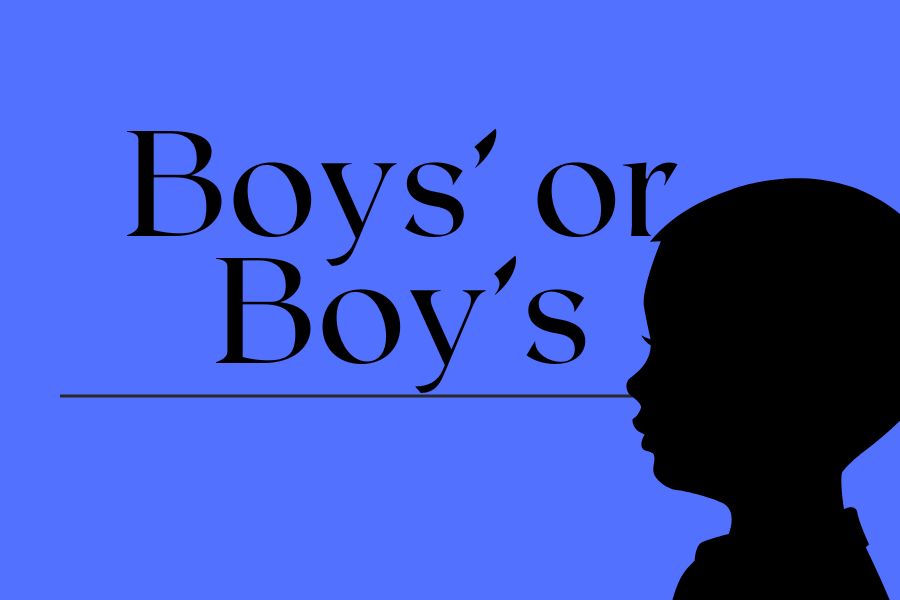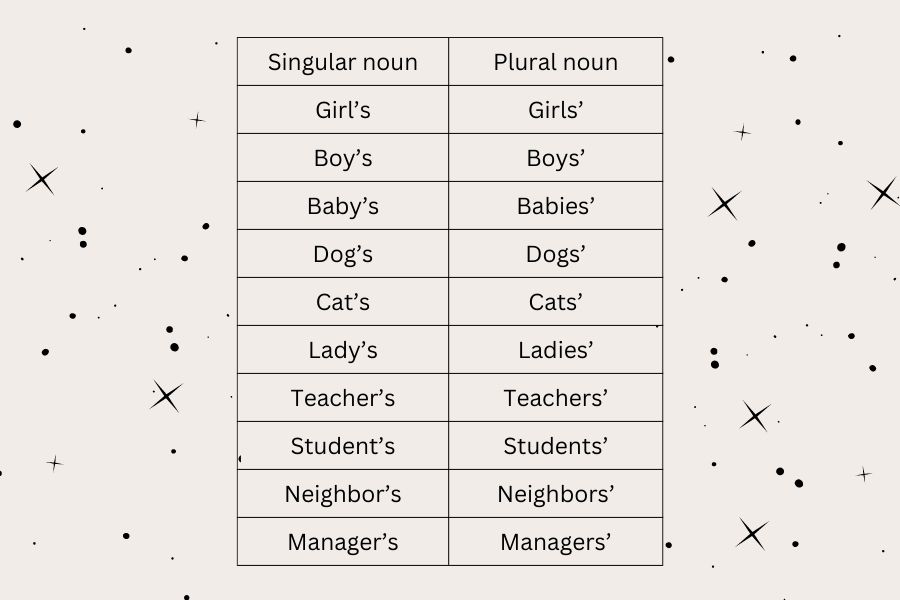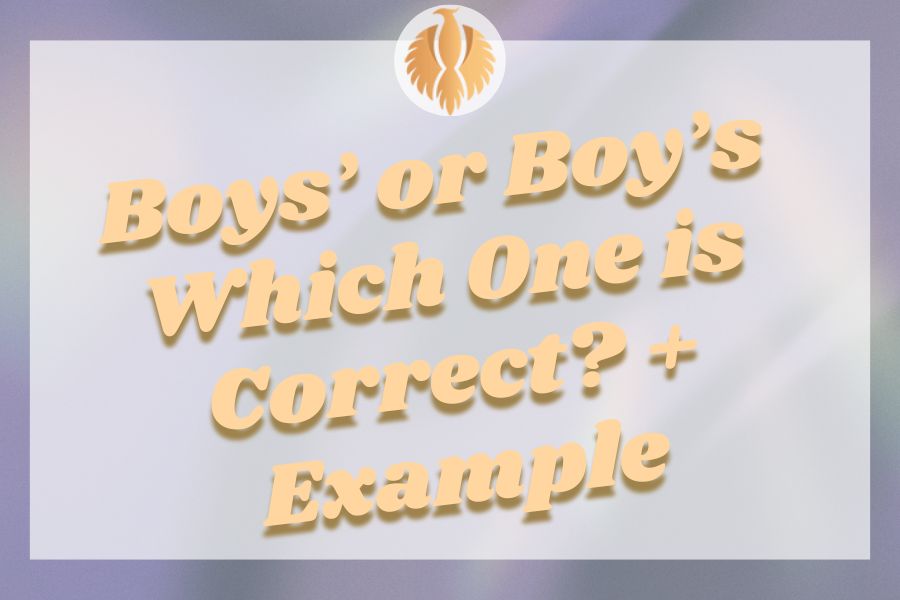Hi again! Today, I have an interesting subject to teach you.
Is it confusing for you to use “boys’” or “boy’s” in a sentence? Do you know which one is correct? Now, I will tell you everything you need to know about this.
Follow me through this very interesting lesson.
First, let’s address the question: Which one is correct, “boys’” or “boy’s”? Both “boys’” and “boy’s” are correct, but they are used in different situations. Understanding the difference between these two forms is essential for proper grammar and clear communication.
The term “boy’s” represents the singular possessive form of the noun “boy.” It indicates ownership by one boy.
For instance, if you want to refer to a toy that belongs to a boy, you would say, “This is the boy’s toy.” The apostrophe before the “s” signifies that the toy is owned by a single boy.
Conversely, “boys’” is the plural possessive form of “boy.” This indicates that something belongs to multiple boys. For example, if you want to mention a playground used by several boys, you would say, “This is the boys’ playground.”
Here, the apostrophe after the “s” shows that the playground is shared by more than one boy.
Grasping the difference between “boy’s” and “boys’” can be a bit challenging, but it gets easier with practice. Let’s explore more examples to help clarify how to use these forms correctly.
Example 1:
- Singular Possessive: The boy’s backpack is blue.
- Plural Possessive: The boys’ backpacks are blue.
In the first sentence, “boy’s” indicates that the backpack belongs to one boy. In the second sentence, “boys’” indicates that the backpacks belong to multiple boys.
Example 2:
- Singular Possessive: The boy’s room is tidy.
- Plural Possessive: The boys’ rooms are tidy.
Here, “boy’s” shows that the room belongs to one boy, while “boys’” shows that the rooms belong to several boys.
Example 3:
- Singular Possessive: The boy’s mother is a teacher.
- Plural Possessive: The boys’ mothers are teachers.
In this example, “boy’s” shows that the mother is connected to one boy, while “boys’” signifies that the mothers are associated with several boys.
It’s essential to recognize that the position of the apostrophe alters the meaning of the phrase.
Using the incorrect form can create misunderstandings and confusion. Thus, it’s vital to be mindful of whether you’re talking about a single boy or multiple boys.
To clarify this further, let’s picture a situation. Suppose you’re at a school gathering and notice a group of boys playing soccer.
If you want to refer to the soccer ball that belongs to one boy, you would say, “That is the boy’s soccer ball.”
On the other hand, if you want to mention the soccer field that all the boys use, you would say, “That is the boys’ soccer field.”
All in all, “boy’s” is the singular possessive form, indicating ownership by one boy, whereas “boys’” is the plural possessive form, indicating ownership by several boys.
By grasping and applying these distinctions, you can enhance your grammar skills and ensure effective communication.
Don’t miss our new video about Boys’ or Boy’s – watch now!
Boys’ or Boy’s- Which One is Correct? + Examples
Well, it’s all about using “apostrophe + s” to show possession. When we want to show that someone owns something or has a close relationship with something, we use an apostrophe + s after the name or the noun.
Examples:
- Is that Frank’s camera?
- Is she the boy’s mother?
- Are you the girl’s teacher?
The important point is that when the noun is plural, we put the apostrophe after the “s”.
Examples:
- There was a big teachers’ conference last week in Mexico City. (a conference for teachers)
- The airplanes’ wings are huge.
- Witches’ hats are usually pointed.
- The fairies’ wings were shimmering.
- The boys’ football field is near here.
As you see in the above examples, when the noun is singular, we add an apostrophe + s after the noun or the name; however, when the noun is plural and already ends in “s”, we only add an apostrophe after the “s”. To explain better, when we write “boy’s” we mean that something belongs to one boy. But when we write “boys’” we mean that something belongs to more than one boy, like two or three or a group of boys.
Learn English for free and have fun with me!: “Humans” or “Humen”? Which One Is Correct?
Detailed Explanation

Let me explain the types of plural nouns to you. We have regular and irregular plural nouns. Irregular plural nouns are nouns that do not become plural by adding -s or -es like most nouns in the English language. You’re probably familiar with many of these already. For example, the plural form of man is men, not mans and the plural form of woman is women, not womans. In this lesson, we are taking “boy” as an example, which has a regular plural form. It means this noun follows the standard possessive rules when used in writing. In the following I’m going to talk about this noun and its plural and plural possessive form.
Boy: Singular Form
‘Boy’ is a singular noun that refers to a male child.
Examples:
- There is only one boy in the swimming club.
- What is that boy doing?
- We’re having a baby, and it’s a boy!
Boys: Plural Form
‘Boys’ is the plural form of the word ‘boy.’ When -s is added to the noun, it shows that there is more than one boy.
Examples:
- The boys decided to play in the park.
- All the boys in my grade are taller than me.
- Why are the boys all wearing stripes?
Boy’s: Possessive Form of the Singular
‘Boy’s’ is the possessive form of the singular noun ‘boy.’ We use this to talk about something that belongs to one boy.
Examples:
- Have you seen the boy’s pencil case?
- The boy’s eyes are green.
- t’s not my ball; it’s that boy’s.
Notice: ‘Boy’s’ is also used as the contracted form of ‘boy is.’ Contractions are used to shorten a sentence by using an apostrophe.
Example:
- The boy is making a sandwich.
becomes
- The boy’s making a sandwich.
Remember that using “boy’s” in this way has nothing to do with the possessive form. However, I just mentioned it here so that you realize the usage if you see it being used when it does not describe ownership.
Learn English for free and have fun with me!: Business vs Busyness – All you Need to Know + Examples
Boys’: Possessive Form of the Plural
“Boys’” is the possessive form of the plural noun “boys”. We use this to talk about something(s) that belongs to more than one boy.
Examples:
- Can you tell me where I can find the boys’ artwork?
- You should have seen the boys’ faces when I told them the truth.
- You can find that item in the boys’ section of the store.
Therefore, both “boys’” and “boy’s” are correct to use. However, we should be careful to use them in the right place.
More examples of plural possessive nouns

This rule of adding just an apostrophe after the final “s” is applied to other plural nouns as well. In the following table, a few other examples of possessive form of plural nouns are provided in a table.
| Singular noun | Plural noun |
| Girl’s | Girls’ |
| Boy’s | Boys’ |
| Baby’s | Babies’ |
| Dog’s | Dogs’ |
| Cat’s | Cats’ |
| Lady’s | Ladies’ |
| Teacher’s | Teachers’ |
| Student’s | Students’ |
| Neighbor’s | Neighbors’ |
| Manager’s | Managers’ |
More about “nouns” and plural possessive forms
Speaking of “nouns”, I think it’s a good idea here to explain a bit more about nouns and possessive forms they take. A noun is a part of speech that names a person, place, thing, action, feeling or idea. Possessive forms of nouns show ownership. Plural nouns indicate a quantity of more than one. Plural possessive nouns indicate the concept of ownership of something by more than one person. There are regular and irregular plural nouns that differ in the form of their possessives.
Regular plural nouns
To show possession for regular plural nouns that end in “s,” we simply add an apostrophe at the end.
Examples:
- Smiths’ grandchild
- Theses’ criteria
- Trucks’ wheels
- Witnesses’ testimony
- Parents’ books
- Pears’ stories
- Potatoes’ skin
- Rabbis’ garb
- Girls’ sports
- Investors’ advice
- Knives’ blades
- Loaves’ nutrition
- Designers’ clothes
- Dishes’ patterns
- Dogs’ adventures
- Chairs’ paintwork
- Children’s hats
- Clocks’ hands
- Companies’ plan
- Countries’ governments
- Bathrooms’ taps
- Bosses’ orders
- Boys’ club
- Bushes’ flowers
- Calves’ hooves
- Appendices’ entries
- Armchairs’ arms
- Attorneys’ fees
- Airplanes’ wings
- Alarms’ ringing
- Ankles’ bones
Sentence Examples:
- Cherries’ stones can break your teeth if you are not careful.
- The fairies’ wings were iridescent.
- Witches’ hats are usually pointed.
- Umbrellas’ handles are sometimes carved.
- The tables’ legs were all wobbly and needed repair.
- Judges’ wigs were powered in the old days.
Learn English for free and have fun with me!: Main Difference Between Carefree and Careless
Irregular Plural Nouns Not Ending in “S”

For irregular plural nouns that do not end in “s,” we add an apostrophe and “s.”
Examples:
- Die’s roll
- Foci’s interest
- Fungi’s proliferation
- Oxen’s yokes
- Stimuli’s effect
- Syllabi’s needs
- Teeth’s cavities
- Mice’s feet
- Nuclei’s composition
- People’s beliefs
- Phenomena’s appearance
- Gentlemen’s association
- Lice’s intrusion
- Media’s influence
- Men’s worries
- Bacteria’s invasion
- Cacti’s protection
- Children’s toys
- Criteria’s timeline
- Women’s issues
Sentence Examples:
- Servicemen’s fees rise after working hours and on weekends.
- Octopi’s arms are eight and have several functions.
- Postmen’s bags are made of leather.
- Hippopotami’s mouths are huge.
- Dolphins got caught in the fishermen’s nets.
- The geese’s eggs were found on the road, smashed.
Compound nouns
For compound nouns, if the plural form ends in “s,” we add only an apostrophe.
Examples:
- Half-brothers’ excitement
- Hang-ups’ attitudes
- Know-it-alls’ conceit
- Pocketfuls’ amount
- Printouts’ clarity
- Time frames’ adjustment
- Toothbrushes’ heads
- Two-year olds’ tantrums
- Vice presidents’ duties
- Vice presidents’ offices
- Waiting rooms’ décor
- Brides-maids’ gowns
- Couch potatoes’ snacks
- Cupfuls’ number
- Fact sheets’ predictions
- Wheeler-dealers’ bargains
- Run-throughs’ length
- Salesclerks’ tips
- School days’ length
- Teaspoonfuls’ number
Sentence Examples:
- The drive-ins’ lines were all very long.
- The hand-me-downs’ stains were hard to get out.
- The ground waters’ contamination was extreme.
- Our get-togethers’ offerings were diverse and plentiful.
- My photocopies’ font color turned out too dim.
If the plural form does not end in “s,” we add an apostrophe and an “s”.
Examples:
- Sisters-in-law’s friendships
- Snowmen’s noses
- Sticks-in-the-mud’s behavior
- Boatmen’s supplies
- Orders-in-council’s decisions
- Passersby’s frowns
- Poets laureate’s awards
- Runners-up’s trophies
- Attorneys at law’s charges
- Attorneys General’s mandates
- Brothers-in-law’s role
- Colonels-in-chief’s agenda
- Editors-in-chief’s opinions
- Fathers-in-law’s obligations
- Forefeet’s condition
- Lookers-on’s opinions
Sentence Examples:
- Both mothers-in-law’s dresses were blue.
- The Captains of the Guard’s insignia was impressive.
- Workmen’s compensation is available if you are injured on the job.
- All Chiefs of Staff’s appointment were deserved.
- Past Speakers of the House’s attire was different.
Learn English for free and have fun with me!: Only Vs. Just– All You Need to Know + Examples
Concluding Note
In this lesson I explained the difference between “boy’s” and “boys’” as examples of singular and plural possessive nouns. As I explained earlier, both of these possessive forms are correct. The only important point is that we use them correctly and in their right places. I also explained more about the word ‘Boy’ specifically and mentioned some grammatical rules about plural possessive nouns. As you see, there are many different types of plural possessive nouns. So, read this lesson carefully again and take notes for yourself if necessary. If you have any questions about this subject, please feel free to ask me and I will answer your questions ASAP. I hope this lesson would be useful and interesting to you. I’m waiting for you here with more interesting English lessons on my website.

Hi, welcome to my blog! My name is Omid and I am thrilled to have you here! I am an English language teacher with 12 years of experience and hold multiple international certifications (TESOL, IELTS, TOEFL, PTE, CELTA). Additionally, I hold a PhD in Applied Linguistics with a specialization in Teaching English as a Second Language (TESL), which fuels my passion for teaching English and assisting others in mastering the language. To me, nothing is more rewarding than helping individuals enhance their English language abilities through various methods. So, let’s embark on this journey of learning English together.




